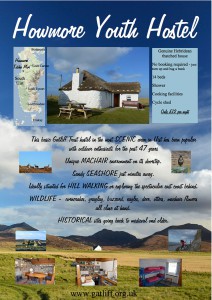
Walk along the Western Isles Way, the oldest road in the Outer Hebrides; experience miles of golden sand, watching the Atlantic waves lap the beach; climb to the top of South Uist’s three highest hills; visit Glen Corradale, when Bonnie Prince Charlie hid for three weeks in 1746; explore the ruins of a 13th monastery; or just observe the gentle ways of machair life.
'Foot and Mouth'
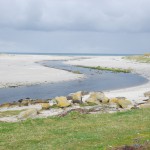 There are many walks in the Highlands & Islands presented by walkhighlands and some are accompanied by a report. The beach circuit, one-hour exploration around the shore and vicinity of Howmore does not have a follow-up by those who have taken the various routes, enjoyed them and wish to provide more details for others. Here Read More ...Read More »
There are many walks in the Highlands & Islands presented by walkhighlands and some are accompanied by a report. The beach circuit, one-hour exploration around the shore and vicinity of Howmore does not have a follow-up by those who have taken the various routes, enjoyed them and wish to provide more details for others. Here Read More ...Read More »Ormacleit Castle
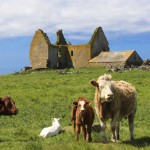 Three generations of cattle, looking alive and well, pose in front of Ormacleit Castle, defunct and ruined. It is, however, monitored by the Royal Commission on the Ancient and Historical Monuments of Scotland. It was occupied from 1705 until 1715 when it burned down, allegedly on the same day that its occupant, Allan Macdonald, was Read More ...Read More »
Three generations of cattle, looking alive and well, pose in front of Ormacleit Castle, defunct and ruined. It is, however, monitored by the Royal Commission on the Ancient and Historical Monuments of Scotland. It was occupied from 1705 until 1715 when it burned down, allegedly on the same day that its occupant, Allan Macdonald, was Read More ...Read More »Big Sky Country
 Expansive beaches, sweeping machair shorelines and here, at Tobha Beag (Howbeg), from Radius Images, is a photograph that makes an ultimate statement of – ‘Big Sky‘. There is an irony here as the Gaelic ‘beag’ is translated as ‘small’. Nearby Howmore comes from the opposite, ‘Tobha Mor’. Whatever the derivations may be, countless hostellers have found Read More ...Read More »
Expansive beaches, sweeping machair shorelines and here, at Tobha Beag (Howbeg), from Radius Images, is a photograph that makes an ultimate statement of – ‘Big Sky‘. There is an irony here as the Gaelic ‘beag’ is translated as ‘small’. Nearby Howmore comes from the opposite, ‘Tobha Mor’. Whatever the derivations may be, countless hostellers have found Read More ...Read More »Seen from a Bus
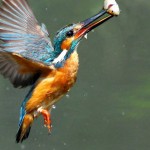 There is an interesting account of a summertime event, published in the Island News & Advertiser, of a Common Kingfisher seen at Howmore. It was spotted by Rosie Quick, who was travelling through the village on a bus, on 27 August and the bird was still in the vicinity some ten days later. It is Read More ...Read More »
There is an interesting account of a summertime event, published in the Island News & Advertiser, of a Common Kingfisher seen at Howmore. It was spotted by Rosie Quick, who was travelling through the village on a bus, on 27 August and the bird was still in the vicinity some ten days later. It is Read More ...Read More »Old Tracks; New Ways
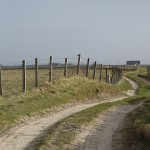 The first phase has started of creating The Hebridean Way – featuring routes from Vatersay to the Butt of Lewis. Signage should be in place for the cycle-path, which will be based on existing roads, by this coming Spring. The upgrading and maintenance of the old tracks which will be the basis for the new Read More ...Read More »
The first phase has started of creating The Hebridean Way – featuring routes from Vatersay to the Butt of Lewis. Signage should be in place for the cycle-path, which will be based on existing roads, by this coming Spring. The upgrading and maintenance of the old tracks which will be the basis for the new Read More ...Read More »Getting Away
 For visitors to the Howmore hostel, during its first 36 years, getting to Eriskay meant an excursion south by road and ferry, involving a timetable and the planning of a return trip. Then in 2001, all changed. No longer was Eric’s Island, from its Norse name, a place of destination; it became a part of Read More ...Read More »
For visitors to the Howmore hostel, during its first 36 years, getting to Eriskay meant an excursion south by road and ferry, involving a timetable and the planning of a return trip. Then in 2001, all changed. No longer was Eric’s Island, from its Norse name, a place of destination; it became a part of Read More ...Read More »Sundown to Dawn
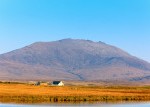 One of the great attractions of the Hebrides is its qualities of light. One photographer who specialises in the capture of this element is Alan Jones and his gallery – Between Sunset and Sunrise – is appealing. A number of his images are in Gatliff hostel territory, including this one of Howmore. Relish his views that Read More ...Read More »
One of the great attractions of the Hebrides is its qualities of light. One photographer who specialises in the capture of this element is Alan Jones and his gallery – Between Sunset and Sunrise – is appealing. A number of his images are in Gatliff hostel territory, including this one of Howmore. Relish his views that Read More ...Read More »Massey on the Machair
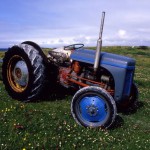 There must have been a time when machinery was rarely seen in the Outer Hebrides. Now mechanisation is as common there now as elsewhere, but somehow the older tractors linger and become almost part of the landscape. This Massey Ferguson tractor on the machair at Howmore just fits in – with style and colour. An Read More ...Read More »
There must have been a time when machinery was rarely seen in the Outer Hebrides. Now mechanisation is as common there now as elsewhere, but somehow the older tractors linger and become almost part of the landscape. This Massey Ferguson tractor on the machair at Howmore just fits in – with style and colour. An Read More ...Read More »Views All Around
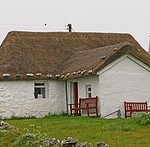 A variety of visitors to Howmore have had their photographs compiled in this selection of Flickr. They serve as a reminder concerning the activities, features and settings of this South Uist township which attracts people throughout the year. The hostel will not be empty during the coming festive season., although the outside seats may not be Read More ...Read More »
A variety of visitors to Howmore have had their photographs compiled in this selection of Flickr. They serve as a reminder concerning the activities, features and settings of this South Uist township which attracts people throughout the year. The hostel will not be empty during the coming festive season., although the outside seats may not be Read More ...Read More »Restorations All Round
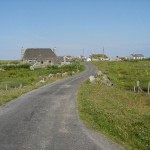 This image of a restored blackhouse in Howmore shows the road that leads from the junction to the hostel, top right. The interactive map that accompanies a range of local photographs has the house marked in a wrong position, but it provides a good sense of the relationship between the village and the adjacent coast. Read More ...Read More »
This image of a restored blackhouse in Howmore shows the road that leads from the junction to the hostel, top right. The interactive map that accompanies a range of local photographs has the house marked in a wrong position, but it provides a good sense of the relationship between the village and the adjacent coast. Read More ...Read More »Real Links
 The British Open Championship is held only on links courses – those on sandy shores. Askernish, just south of Howmore, has its own ‘Open’, but will not be hosting the national event. The insufficient space at our hostel would be a problem! The course was designed by Old Tom Morris and is acclaimed by golfers Read More ...Read More »
The British Open Championship is held only on links courses – those on sandy shores. Askernish, just south of Howmore, has its own ‘Open’, but will not be hosting the national event. The insufficient space at our hostel would be a problem! The course was designed by Old Tom Morris and is acclaimed by golfers Read More ...Read More »Looking Down
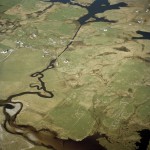 The internet provides opportunities for seeing places from different angles. Street-views may have their attractions in urban areas, but the rural aspects that are most compelling often involve looking down from above. The photograph here, of Howmore, is provided by the Royal Commission on the Ancient and Historical Monuments of Scotland. However, do Go Historic and Read More ...Read More »
The internet provides opportunities for seeing places from different angles. Street-views may have their attractions in urban areas, but the rural aspects that are most compelling often involve looking down from above. The photograph here, of Howmore, is provided by the Royal Commission on the Ancient and Historical Monuments of Scotland. However, do Go Historic and Read More ...Read More »Gaze Back
 Life has not changed much for ducks in South Uist, but for humans the past 130 years have seen remarkable developments. Take a look at Ordnance Gazetteer of Scotland: A Survey of Scottish Topography, Statistical, Biographical and Historical, edited by Francis H Groome and originally published in parts by Thomas C Jack, Grange Publishing Works, Edinburgh Read More ...Read More »
Life has not changed much for ducks in South Uist, but for humans the past 130 years have seen remarkable developments. Take a look at Ordnance Gazetteer of Scotland: A Survey of Scottish Topography, Statistical, Biographical and Historical, edited by Francis H Groome and originally published in parts by Thomas C Jack, Grange Publishing Works, Edinburgh Read More ...Read More »Load on the Road
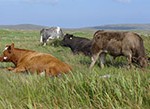 The threads of economic life that run through Howmore – from crofting, bus garaging, cycle retailing to bed and breakfast accommodation and hostel provision – include, of course, keeping (or trying to keep) cattle. The creatures have a tendency to roam and will feature occasionally on the road to the hostel. So beware and be Read More ...Read More »
The threads of economic life that run through Howmore – from crofting, bus garaging, cycle retailing to bed and breakfast accommodation and hostel provision – include, of course, keeping (or trying to keep) cattle. The creatures have a tendency to roam and will feature occasionally on the road to the hostel. So beware and be Read More ...Read More »Reputations
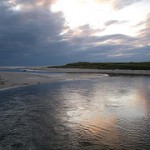 The reputation of Tommy MacDonald, the husband of Howmore warden Betty, went before him. A cyclist who was making a long-distance trip down the Western Isles was keen to have his assistance and to meet him, but it was not to be. The account of the journey is to be found on the blog – Read More ...Read More »
The reputation of Tommy MacDonald, the husband of Howmore warden Betty, went before him. A cyclist who was making a long-distance trip down the Western Isles was keen to have his assistance and to meet him, but it was not to be. The account of the journey is to be found on the blog – Read More ...Read More »Now More
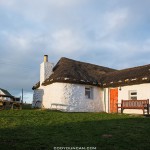 This section of the blog by Cody Duncan has featured before, but as his observations of Berneray and Rhenigidale have appeared over the last two days, it’s a case of now more from Howmore. He refers to the crossing which was stormy, the fire which was warming … as was the whisky. His image of Read More ...Read More »
This section of the blog by Cody Duncan has featured before, but as his observations of Berneray and Rhenigidale have appeared over the last two days, it’s a case of now more from Howmore. He refers to the crossing which was stormy, the fire which was warming … as was the whisky. His image of Read More ...Read More »Machair, More Coal
 There is an evocative website concerning Wartime in Uist, including an item about Howmore: Robbie MacLeod reminisced, at an event in Kildonan Museum, about few if any households in the Uists having coal during the war. The military had their supplies taken by ‘puffer’ to Lochboisdale. A convoy of army trucks would then transport this across the Read More ...Read More »
There is an evocative website concerning Wartime in Uist, including an item about Howmore: Robbie MacLeod reminisced, at an event in Kildonan Museum, about few if any households in the Uists having coal during the war. The military had their supplies taken by ‘puffer’ to Lochboisdale. A convoy of army trucks would then transport this across the Read More ...Read More »Barley Blowing
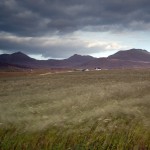 A fairly regular feature of the Howmore weather is the wind. It is seen here blowing the barley in a field. One of the many pleasures of the hostel is being able to get out of the wind and realising that the thick walls give both protection as well as that sense of security. A Read More ...Read More »
A fairly regular feature of the Howmore weather is the wind. It is seen here blowing the barley in a field. One of the many pleasures of the hostel is being able to get out of the wind and realising that the thick walls give both protection as well as that sense of security. A Read More ...Read More »Panorama Howmore
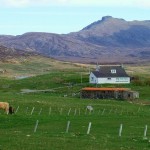 Take a tour of Howmore with a panoramic device to be found at The Glebe Blog. It allows you to make a trip in the meadows with the mountains beyond. The village has much to offer the traveller by way of dwellings of all sorts and buildings, both existing and ruined, of an ecclesiastical nature. The Read More ...Read More »
Take a tour of Howmore with a panoramic device to be found at The Glebe Blog. It allows you to make a trip in the meadows with the mountains beyond. The village has much to offer the traveller by way of dwellings of all sorts and buildings, both existing and ruined, of an ecclesiastical nature. The Read More ...Read More »'Cloud Conjurors'
 When Christine Smith was writing the Country Diary in The Guardian in February 2012, she referred to Hecla, Corrodale and Mhor as being mountains that are ‘cloud conjurors’. Their range is across the main road from the Howmore hostel, taking time to reach and longer to climb. Accommodation in that area is limited so a Read More ...Read More »
When Christine Smith was writing the Country Diary in The Guardian in February 2012, she referred to Hecla, Corrodale and Mhor as being mountains that are ‘cloud conjurors’. Their range is across the main road from the Howmore hostel, taking time to reach and longer to climb. Accommodation in that area is limited so a Read More ...Read More »A Route Re-opened
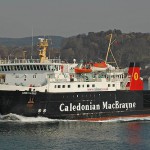 A pilot scheme will soon start to test demand for winter services on the old Mallaig to Lochboisdale crossing by the MV Lord of the Isles. Reaching Howmore could involve the following. Taking the train to Glasgow Central and walking the relatively short distance to Queen Street for the West Highland Line running alongside Loch Lomond, over Read More ...Read More »
A pilot scheme will soon start to test demand for winter services on the old Mallaig to Lochboisdale crossing by the MV Lord of the Isles. Reaching Howmore could involve the following. Taking the train to Glasgow Central and walking the relatively short distance to Queen Street for the West Highland Line running alongside Loch Lomond, over Read More ...Read More »Howmore Colours
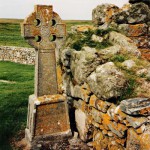 This blog by Linda Gillard looks at colours, textures and other interests, including what she calls ’emotional geology’. When she visited Howmore her image and impressions were of: ‘The ancient churchyard at Howmore, South Uist. The stones here are encrusted with vividly coloured lichen. (Lichen provided some of the dyes used to make tweed.) At Read More ...Read More »
This blog by Linda Gillard looks at colours, textures and other interests, including what she calls ’emotional geology’. When she visited Howmore her image and impressions were of: ‘The ancient churchyard at Howmore, South Uist. The stones here are encrusted with vividly coloured lichen. (Lichen provided some of the dyes used to make tweed.) At Read More ...Read More »Machair and More
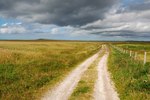 Consider these changes that have occurred. First there was William Bald’s survey of the potential main routes through South Uist. This distinguished road engineer opted for the shoreline while eventually traffic was carried on the present one towards the middle of the plain. There are plans to reinvigorate the older route as the Machair Path Read More ...Read More »
Consider these changes that have occurred. First there was William Bald’s survey of the potential main routes through South Uist. This distinguished road engineer opted for the shoreline while eventually traffic was carried on the present one towards the middle of the plain. There are plans to reinvigorate the older route as the Machair Path Read More ...Read More »'Waiting out the Weather'
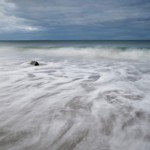 The Country Diary in The Guardian attracts descriptions of British scenes with the emphasis on the quietly dramatic, ever-changing scenes of rural life. Here, in her piece published on 8 March 2012, Christine Smith considers the responses of lapwings and oystercatchers to the turbulent, troubled waters of the tidal flow on the beach at Howmore. Read More ...Read More »
The Country Diary in The Guardian attracts descriptions of British scenes with the emphasis on the quietly dramatic, ever-changing scenes of rural life. Here, in her piece published on 8 March 2012, Christine Smith considers the responses of lapwings and oystercatchers to the turbulent, troubled waters of the tidal flow on the beach at Howmore. Read More ...Read More »Compare and Contrast
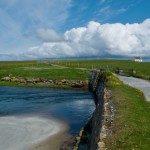 Be aware and be warned that this idyllic scene of the seashore and machair near Howmore is not witnessed, in real life, every day of the year. Howmore is in an exposed position on the Atlantic coast where winds can be strong and gales evident. This short YouTube clip gives you a taste of what Read More ...Read More »
Be aware and be warned that this idyllic scene of the seashore and machair near Howmore is not witnessed, in real life, every day of the year. Howmore is in an exposed position on the Atlantic coast where winds can be strong and gales evident. This short YouTube clip gives you a taste of what Read More ...Read More »Making Waves to Howmore
 Here is an extract from the blog of Cody Duncan, written after a turbulent winter crossing to the islands and created in January 2013. ‘At Howmore, South Uist, is one of three hostels run by the Gatliff Trust. The hostels are simple places in restored, thatched roof black houses; as the traditional, single room stone houses Read More ...Read More »
Here is an extract from the blog of Cody Duncan, written after a turbulent winter crossing to the islands and created in January 2013. ‘At Howmore, South Uist, is one of three hostels run by the Gatliff Trust. The hostels are simple places in restored, thatched roof black houses; as the traditional, single room stone houses Read More ...Read More »Time Capsule
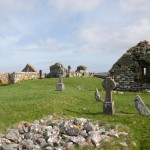 PastHorizons: adventures-in-archaeology has an interesting website. One of its items features Howmore and what is perceived to be a time-capsule, running in an unbroken line from the Iron Age to the Clearances. An aspect that it examines is the theory that the Viking incomers did not slaughter the inhabitants of this and other settlements, but Read More ...Read More »
PastHorizons: adventures-in-archaeology has an interesting website. One of its items features Howmore and what is perceived to be a time-capsule, running in an unbroken line from the Iron Age to the Clearances. An aspect that it examines is the theory that the Viking incomers did not slaughter the inhabitants of this and other settlements, but Read More ...Read More »St Columba Trail
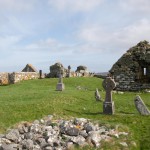 Read the Howmore entry for the St Columba Trail and you realise that the village was something of a religious centre with a long and distinguished history. Writing in 1703, Martin Martin observed: The Natives speak the Irish tongue (Gaelic) more perfectly here than in most of the other Islands; partly because of the remoteness, and Read More ...Read More »
Read the Howmore entry for the St Columba Trail and you realise that the village was something of a religious centre with a long and distinguished history. Writing in 1703, Martin Martin observed: The Natives speak the Irish tongue (Gaelic) more perfectly here than in most of the other Islands; partly because of the remoteness, and Read More ...Read More »Six Things To Do In South Uist
 The west side of South Uist has a beach that is almost uninterrupted for its 20-mile length. Development along it is nil. Just imagine what would have happened had global warming given Mediterranean-style temperatures to these parts. However, there may, on occasions, appear to be a limited number of things to do on the island. Read More ...Read More »
The west side of South Uist has a beach that is almost uninterrupted for its 20-mile length. Development along it is nil. Just imagine what would have happened had global warming given Mediterranean-style temperatures to these parts. However, there may, on occasions, appear to be a limited number of things to do on the island. Read More ...Read More »Howmore Appeal
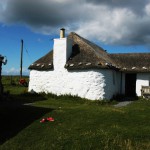 The Howmore Appeal has reached its £47,000 target. All who contributed are very warmly thanked. The appeal is now closed. Read More ...Read More »
The Howmore Appeal has reached its £47,000 target. All who contributed are very warmly thanked. The appeal is now closed. Read More ...Read More »A Direct Challenge - Reach Usinish
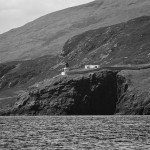 It’s more or less a straight line from Howmore across South Uist to the Usinish Lighthouse, but it needs reserves of energy and a degree of expedition equipment to get there. The route would involve the descent to the east of Ben More, Hecla and Corodale and the deserted glens with their abandoned dwellings, shieling Read More ...Read More »
It’s more or less a straight line from Howmore across South Uist to the Usinish Lighthouse, but it needs reserves of energy and a degree of expedition equipment to get there. The route would involve the descent to the east of Ben More, Hecla and Corodale and the deserted glens with their abandoned dwellings, shieling Read More ...Read More »Keep Ahead of the Field
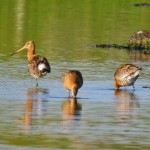 In the past it was word of mouth that kept us informed, but now it’s possible to have information by pager, smartphone, app and website. For example, the Blackwit has appeared in the River Howmore and this news is relayed by Western Isles Wildlife. Click on and be in the know. Last Saturday, for instance, Read More ...Read More »
In the past it was word of mouth that kept us informed, but now it’s possible to have information by pager, smartphone, app and website. For example, the Blackwit has appeared in the River Howmore and this news is relayed by Western Isles Wildlife. Click on and be in the know. Last Saturday, for instance, Read More ...Read More »Stone Confusion
 When at Howmore there is a distinctive standing stone to visit at An Carra, just off the A865 north of Kildonan. It is 17′ high, almost 5′ wide and has a depth of 2′. Full details are to be found on the Britain Express website and here there is an interesting warning. Another stone with Read More ...Read More »
When at Howmore there is a distinctive standing stone to visit at An Carra, just off the A865 north of Kildonan. It is 17′ high, almost 5′ wide and has a depth of 2′. Full details are to be found on the Britain Express website and here there is an interesting warning. Another stone with Read More ...Read More »Am Paipear Appears Monthly
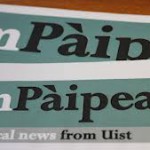 It was in the hot summer of 1976 that the presses first rolled to produce the community newspaper of the Uists, Am Paipear . It appears on the first Thursday of each month, is available in an online edition and is based in Airport Road, Balivanich, Benbecula. Here’s a way of keeping in touch with Read More ...Read More »
It was in the hot summer of 1976 that the presses first rolled to produce the community newspaper of the Uists, Am Paipear . It appears on the first Thursday of each month, is available in an online edition and is based in Airport Road, Balivanich, Benbecula. Here’s a way of keeping in touch with Read More ...Read More »Wheels at the Hub
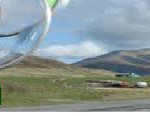 Howmore is at the hub of South Uist. It is approximately half-way between Benbecula and Eriskay, is the site of the island’s bus and coach garage and has a thriving cycle business, Rothan Cycles. The word ‘rothan’ is the Gaelic for ‘wheels’ and here is a particularly useful place for hiring and purchasing, repairs and Read More ...Read More »
Howmore is at the hub of South Uist. It is approximately half-way between Benbecula and Eriskay, is the site of the island’s bus and coach garage and has a thriving cycle business, Rothan Cycles. The word ‘rothan’ is the Gaelic for ‘wheels’ and here is a particularly useful place for hiring and purchasing, repairs and Read More ...Read More »Wide Landscapes; High Food Stocks
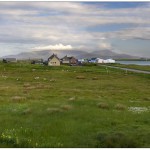 When you are staying at Howmore, you need to be conscious that the village shop closed … over a year ago. Two Co-operative Stores are available, handily placed to the north and south, but a drive away. Their opening hours are extensive – from 7.00 – 22.00 on Mondays to Saturdays and from 12.30 – Read More ...Read More »
When you are staying at Howmore, you need to be conscious that the village shop closed … over a year ago. Two Co-operative Stores are available, handily placed to the north and south, but a drive away. Their opening hours are extensive – from 7.00 – 22.00 on Mondays to Saturdays and from 12.30 – Read More ...Read More »Rare Natural Woodland
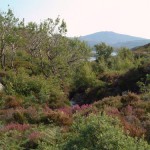 On the southern slopes of Ben More (2034′) is a ravine containing natural woodland and having the status of an area of Special Scientific Interest. At one time this was apparently the usual variety of vegetation for the Outer Hebrides. A disputed theory is that the Vikings devastated it with use and abuse. However, this Read More ...Read More »
On the southern slopes of Ben More (2034′) is a ravine containing natural woodland and having the status of an area of Special Scientific Interest. At one time this was apparently the usual variety of vegetation for the Outer Hebrides. A disputed theory is that the Vikings devastated it with use and abuse. However, this Read More ...Read More »A Centre for Thatch
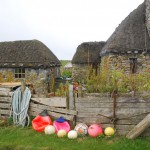 Howmore is well-known for several things, among them is its collection of thatched buildings, considered to be one of the best in Scotland. An advantage to those interested is that the village is never crowded, even at the height of Summer. So with the distant moorland of the hills behind, the luxuriant machair on the Read More ...Read More »
Howmore is well-known for several things, among them is its collection of thatched buildings, considered to be one of the best in Scotland. An advantage to those interested is that the village is never crowded, even at the height of Summer. So with the distant moorland of the hills behind, the luxuriant machair on the Read More ...Read More »Mark Newton at Howmore
 Mark Newton, currently journeying around the coasts of Britain on a mobility scooter, is making progress, meeting people and raising money for charity. Earlier in the month he reached Howmore and describes his encounters in Day 59 of his log. He saw an opportunity to photograph a goose and goslings, missed it, but soon found himself Read More ...Read More »
Mark Newton, currently journeying around the coasts of Britain on a mobility scooter, is making progress, meeting people and raising money for charity. Earlier in the month he reached Howmore and describes his encounters in Day 59 of his log. He saw an opportunity to photograph a goose and goslings, missed it, but soon found himself Read More ...Read More »Restoration Revives Memories
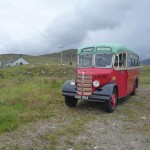 Howmore is approximately half-way along South Uist and so was a useful location to build a bus depot.The stock of vehicles is regularly replaced as innovations in public transport are made, but for bus enthusiasts this is a haven. Some of the old David MacBrayne coaches have been restored and are maintained here. Their distinctive Read More ...Read More »
Howmore is approximately half-way along South Uist and so was a useful location to build a bus depot.The stock of vehicles is regularly replaced as innovations in public transport are made, but for bus enthusiasts this is a haven. Some of the old David MacBrayne coaches have been restored and are maintained here. Their distinctive Read More ...Read More »Something of a Hub for Ferries
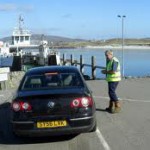 Howmore is something of a hub for ferries, although the distances to them are deceptively long. The traditional local terminal has been Lochboisdale, where steamers have been calling since 1880 and from which CalMac runs regular, rather than frequent, services to Castlebay, Barra, and on to Oban. There are occasional proposals to revive the route Read More ...Read More »
Howmore is something of a hub for ferries, although the distances to them are deceptively long. The traditional local terminal has been Lochboisdale, where steamers have been calling since 1880 and from which CalMac runs regular, rather than frequent, services to Castlebay, Barra, and on to Oban. There are occasional proposals to revive the route Read More ...Read More »A Seven-Year Occupancy
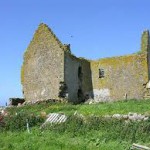 Look, don’t go and touch – applies particularly to Ormacleit Castle, three miles to the south of Howmore. It is on private land and, with the constant weathering on its coastal situation, is in need of protection. Allan MacDonald, Chief of the Clan Ranald, supervised the start of the building in 1701, moved in on Read More ...Read More »
Look, don’t go and touch – applies particularly to Ormacleit Castle, three miles to the south of Howmore. It is on private land and, with the constant weathering on its coastal situation, is in need of protection. Allan MacDonald, Chief of the Clan Ranald, supervised the start of the building in 1701, moved in on Read More ...Read More »Loch Skipport - A Place of the Past
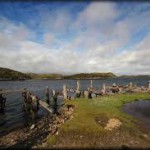 Travel north from Howmore for a few miles and take the road a short distance to Loch Skipport, on the the east coast of South Uist. As this road nears its end is a man-made gorge and then a series of hairpin bends before a deserted quayside and decaying pier struts. Read More ...Read More »
Travel north from Howmore for a few miles and take the road a short distance to Loch Skipport, on the the east coast of South Uist. As this road nears its end is a man-made gorge and then a series of hairpin bends before a deserted quayside and decaying pier struts. Read More ...Read More »Kildonan - a Range of Facilities
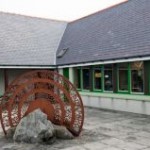 The Kildonan Centre is a few minutes drive south from Howmore and is open from April until October. Here there is a museum, built on the site of an old school, a craft shop, an archive dedicated to Margaret Fay Shaw, a room for archaeologists to clean and examine their finds, and a cafe as Read More ...Read More »
The Kildonan Centre is a few minutes drive south from Howmore and is open from April until October. Here there is a museum, built on the site of an old school, a craft shop, an archive dedicated to Margaret Fay Shaw, a room for archaeologists to clean and examine their finds, and a cafe as Read More ...Read More »Corncrake Country
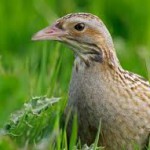 Under two miles to the north of Howmore is the Loch Druidibeg Nature Reserve, a significant breeding ground for the Corncrake or Landrail (Crex crex). These birds are to be found from these western shores of Europe across Asia as far as western China. They migrate to Africa during the winter months in the northern Read More ...Read More »
Under two miles to the north of Howmore is the Loch Druidibeg Nature Reserve, a significant breeding ground for the Corncrake or Landrail (Crex crex). These birds are to be found from these western shores of Europe across Asia as far as western China. They migrate to Africa during the winter months in the northern Read More ...Read More »1200 Years as a Centre
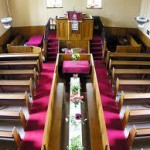 London is a financial centre; Leeds a call centre, Manchester a media centre and Howmore … an ecclesiastical centre. The first church was probably established here in the 9th Century, although the oldest of the surviving four ruined chapels dates back to around 1200. The remains of these buildings, of the Irish Celtic monastic-style, Read More ...Read More »
London is a financial centre; Leeds a call centre, Manchester a media centre and Howmore … an ecclesiastical centre. The first church was probably established here in the 9th Century, although the oldest of the surviving four ruined chapels dates back to around 1200. The remains of these buildings, of the Irish Celtic monastic-style, Read More ...Read More »Walking on Air
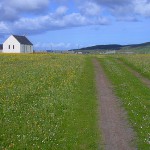 The website WalkHighlands gives details of a one hour tour on foot of the attractions at Howmore. It takes in the church, beach, machair, thatched cottages, four ruins of ecclesiastical buildings and the hostel. Compared with the more arduous hill-walking nearby, this is like walking on air and is to be … recommended.Read More »
The website WalkHighlands gives details of a one hour tour on foot of the attractions at Howmore. It takes in the church, beach, machair, thatched cottages, four ruins of ecclesiastical buildings and the hostel. Compared with the more arduous hill-walking nearby, this is like walking on air and is to be … recommended.Read More »From Force Seven ... to 'Heaven'
 A visitor emailed: ‘I said I was going to South Uist and would look in on Howmore. Since I was last there a good few years ago it has been refurbished and was looking in very fine condition. The new shower was spotless and the beds were attractive in their new small rooms. It Read More ...Read More »
A visitor emailed: ‘I said I was going to South Uist and would look in on Howmore. Since I was last there a good few years ago it has been refurbished and was looking in very fine condition. The new shower was spotless and the beds were attractive in their new small rooms. It Read More ...Read More »